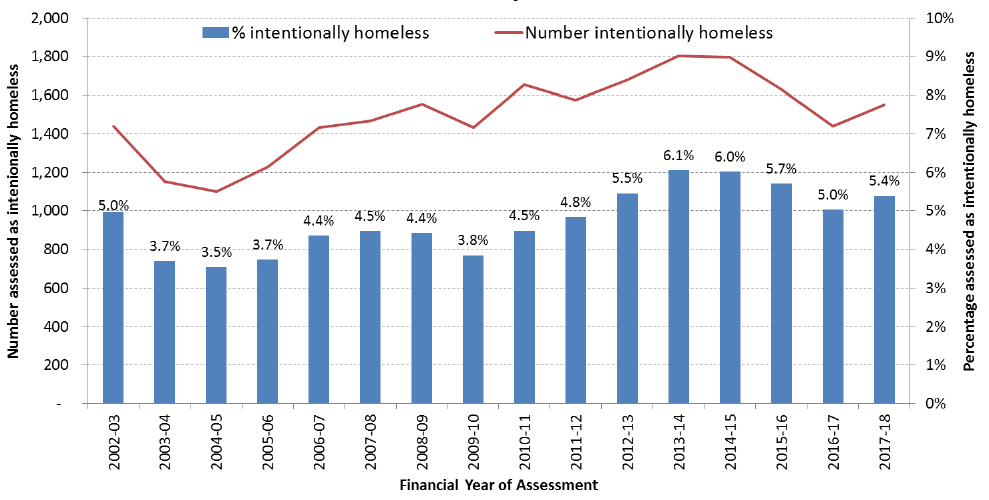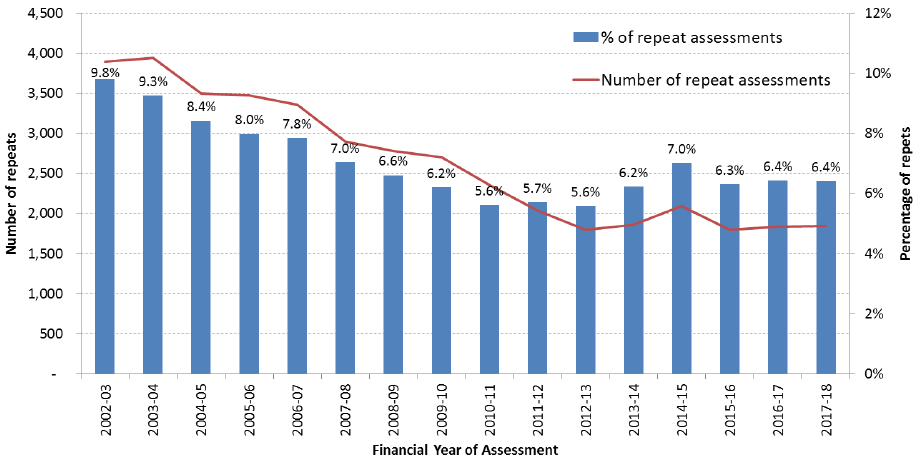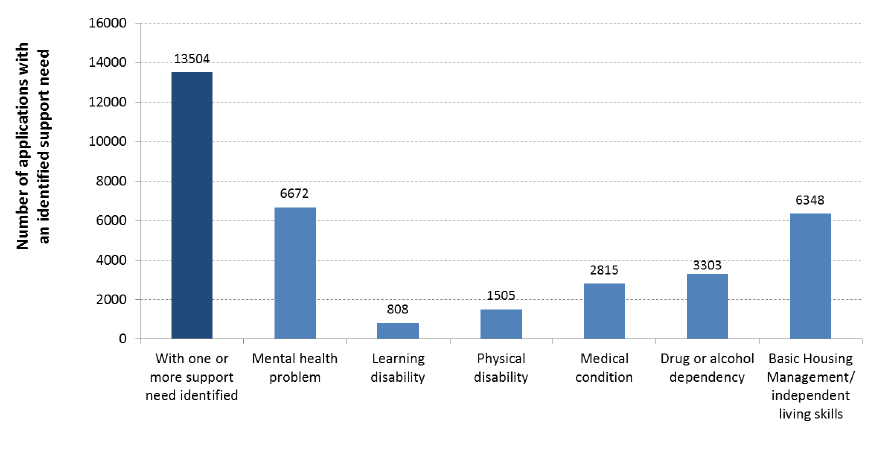Homelessness in Scotland: 2017 to 2018
Information on local authority homelessness applications, assessments and outcomes.
Assessments
(Tables 11 to 16)
During 2017/18, 82% of applicants (28,792 assessments out of a total of 34,950) were assessed as homeless or threatened with homelessness (Table 12). This is a slight increase (208 assessments, 1%) when comparing with last year. The proportion of applicants assessed as homeless/threatened with homelessness has gradually increased from 72% in 2004/05 and has remained above 80% since 2012/13.
There were 27,241 unintentionally homeless assessments during 2017/18, an increase of 95 assessments on 2016/17. These households are entitled to settled accommodation.a
Chart 7 below shows that relatively few assessments are found to be intentionally homeless or threatened with homelessness, comprising 5.4% (or 1,551) of all homeless or threatened with homelessness assessments. However, this proportion has risen (from a low point of 3.5% in 2004/05).
Chart 7: Scotland: Intentionally Homelessness assessments

The chart shows for each year the percentage of assessments where the applicant household was assessed as intentionally homeless or intentionally threatened with homelessness, as a proportion of those assessed as homeless or threatened with homelessness (and prior to 31st December 2012, the demonstrator was limited to those also in priority need.)
Prior to the abolition of the priority need test, only those assessed as homeless (or threatened with homelessness) and in priority need would have proceeded to the intentionality test. However, following abolition, all those assessed as homeless (or threatened with homelessness) are tested for intentionality. As a result, more homeless applicants may be found to be intentionally homeless.
Repeat homelessness
The percentage of homeless assessments identified as repeat cases (i.e. where a previous application from the household had been closed less than 12 months before the current assessment[9]) fell from 9.8% in 2002/03 (3,892 assessments) to a low of 5.6% in both 2010/11 and 2012/13. It has since risen to 6.4% (1,843 assessments) in 2017/18 (See Chart 8 and Table 14).
The rate of repeat homelessness varies by Local Authority area, from around 13% in Inverclyde to less than 1% in Shetland and Orkney (Table 14).
Chart 8: Scotland: Repeat homelessness assessments

The chart shows for each year the percentage of assessment where the percentage of assessments where the applicant household was assessed as homeless or threatened with homelessness, had previously applied and been assessed as homeless or threatend with homelessness and whose previous application had been closed wihtin 12 months of their current application.
Support needs of homeless households
Of the 28,792 households assessed as homeless in 2017/18, 13,504 (47%) cited having one or more support needs. This proportion has increased by 3 percentage points since 2016/17 and 13 percentage points since 2013/14 (Table 15).
During 2017/18, around a half of applicants with support needs cited a mental health problem as a support need (49% of those with support needs or 6,672 times indicated). 47% specified support needs for basic housing management/ independent living reasons (indicated 6,348 times) and 24% cited drug or alcohol dependency (indicated 3,303 times) (See Chart 9).
When considering that repeat homelessness applications have risen since 2012/13, the increase in support needs identified in applications may indicate a more complex situation.
Chart 9: Identified Support Needs of Homeless Households Scotland 2017-18

Contact
There is a problem
Thanks for your feedback